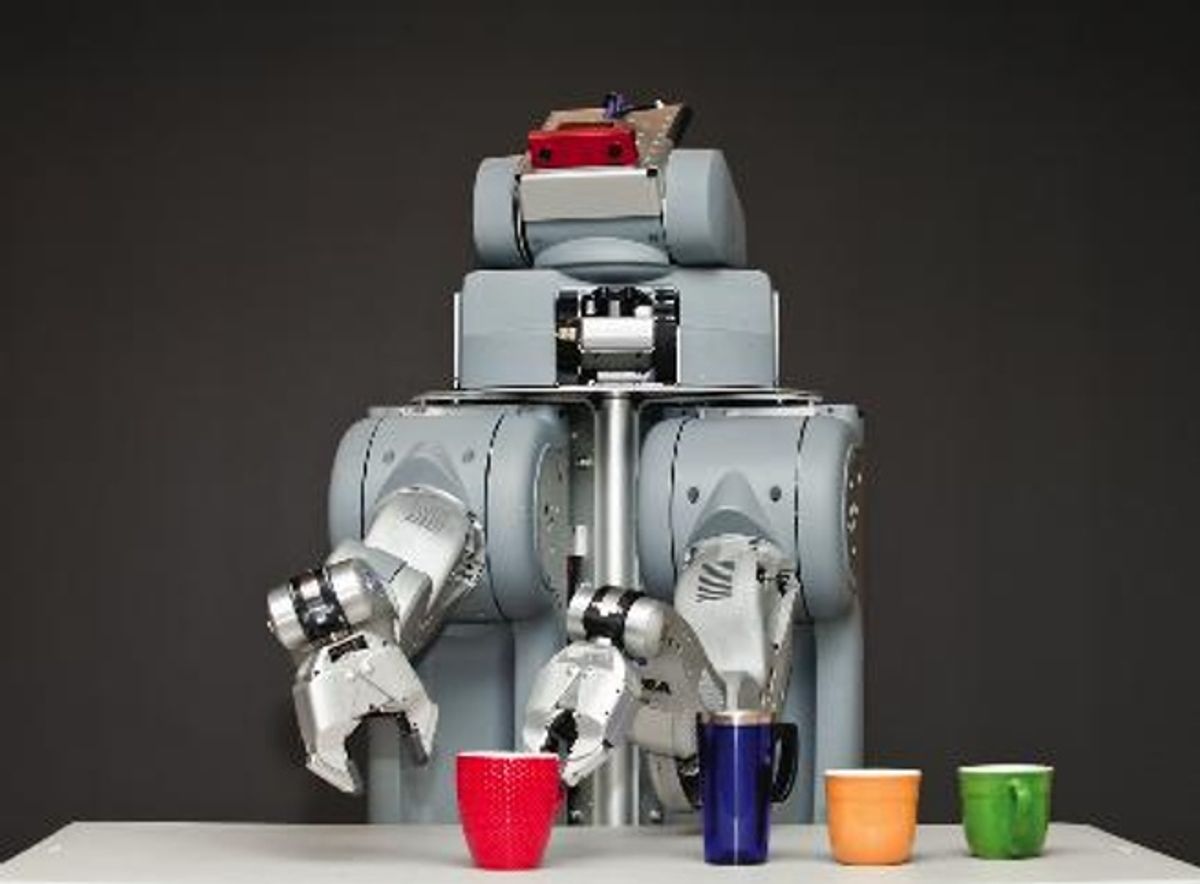Robots with nimble hands already help us assemble cars, harvest fruits, and even disarm bombs. Now when will they be ready to assist us with another life-changing task: loading a dishwasher?
Nobody really knows. To find out, a group of roboticists is organizing the Mobile Manipulation Challenge, to take place at the 2010 IEEE International Conference on Robotics and Automation. Research groups are invited to bring their robots to Anchorage, Alaska, next May to show their skills at moving around cluttered spaces and manipulating objects autonomously.
This is the third edition of the challenge. The first two were more in the format of open demonstrations. This time the tasks will be standardized. They were chosen to be complex and compelling: the robots will have to "clear up a room that has been used as a toddler's playground" (talk about clutter) and "clear a dining table and place all the dishes in a dishwasher tray."
To learn more about the challenge, I talked with Matei Ciocarlie, a researcher at Willow Garage who is helping organize the event.
Automaton: What is the goal of the Mobile Manipulation Challenge?
Matei Ciocarlie: First I want to emphasize that it is a challenge, not a competition. There won't be any winner or loser and no big fat prize will be awarded. This event is about sharing knowledge. The main objective is to assess the state of the art in mobile manipulation, which is a harder question than it seems. Everybody uses its platform in its own environment so it is hard to really understand where this complex field really is.
Automaton: The challenge brings up the theme of standardization, which many people in the robotics community believe is necessary to popularize personal robots. Where will standardization come from in robotics?
Ciocarlie: In terms of software, it is clear for me that it will come from open source, which is the whole idea behind our effort at Willow. In terms of hardware, standardization is desirable, but we have to be carefull not to adopt standards that will hinder creativity. We have to find the right balance, at the right time. It is still not clear for me if people will join the early winners to make de facto standards or if they'll come from something like an ISO or IEEE committee.
Automaton: What is so difficult in mobile manipulation?
Ciocarlie: In terms of challenges faced by the robots, I'll let the event answer the question. Speaking about mobile manipulation in general, I believe that the complexity and multi-disciplinary nature of the field requires us to share the work so we can move forward more rapidly than what we're doing right now. Achieving this kind of collaboration is a challenge that we have to solve. And finally, organizing the event is a challenge in itself. Bringing complex and heavy lab prototypes to Alaska is not easily done, and it shows the dedication of the participants to move towards robots that can leave the lab and advance towards industrialized products.
Automaton: Why is Willow Garage involved in the organization of this event?
Ciocarlie: Robotics is such a broad field, we need to share in order to reach a critical mass faster and see robots make their way out of the labs and factories. Sharing knowledge is ingrained in our philosophy at Willow. Being part of this event is one effort among others.
Automaton: Will we see one of your PR2 [photo above] driving around and picking up objects next May in Anchorage?
Ciocarlie: I can't tell definitely, the next months will. We're working hard towards that, and keeping our grippers crossed!
Samuel Bouchard is a co-founder of Robotiq in Quebec City.
Image: Willow Garage




